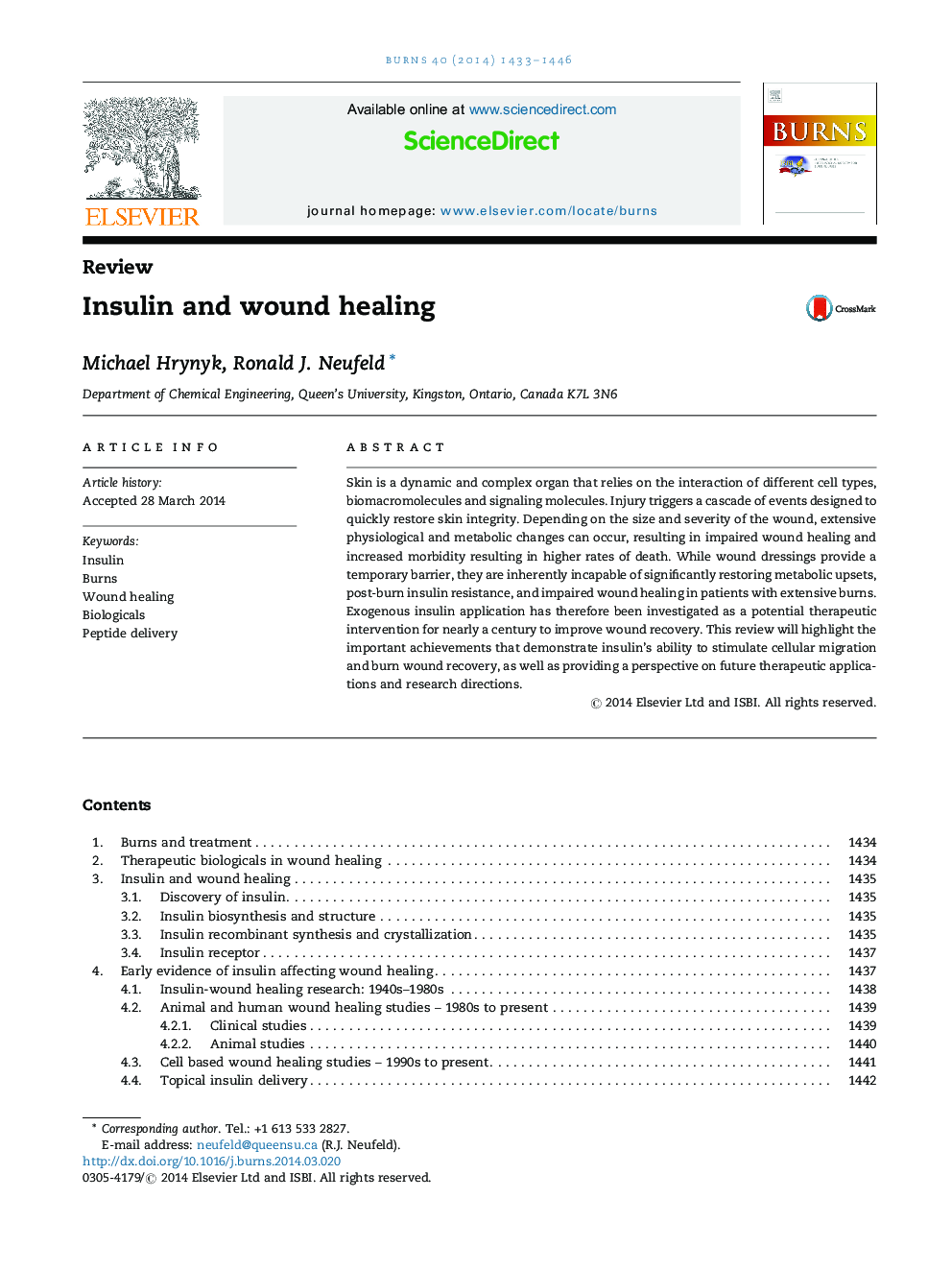| Article ID | Journal | Published Year | Pages | File Type |
|---|---|---|---|---|
| 3104365 | Burns | 2014 | 14 Pages |
Skin is a dynamic and complex organ that relies on the interaction of different cell types, biomacromolecules and signaling molecules. Injury triggers a cascade of events designed to quickly restore skin integrity. Depending on the size and severity of the wound, extensive physiological and metabolic changes can occur, resulting in impaired wound healing and increased morbidity resulting in higher rates of death. While wound dressings provide a temporary barrier, they are inherently incapable of significantly restoring metabolic upsets, post-burn insulin resistance, and impaired wound healing in patients with extensive burns. Exogenous insulin application has therefore been investigated as a potential therapeutic intervention for nearly a century to improve wound recovery. This review will highlight the important achievements that demonstrate insulin's ability to stimulate cellular migration and burn wound recovery, as well as providing a perspective on future therapeutic applications and research directions.
